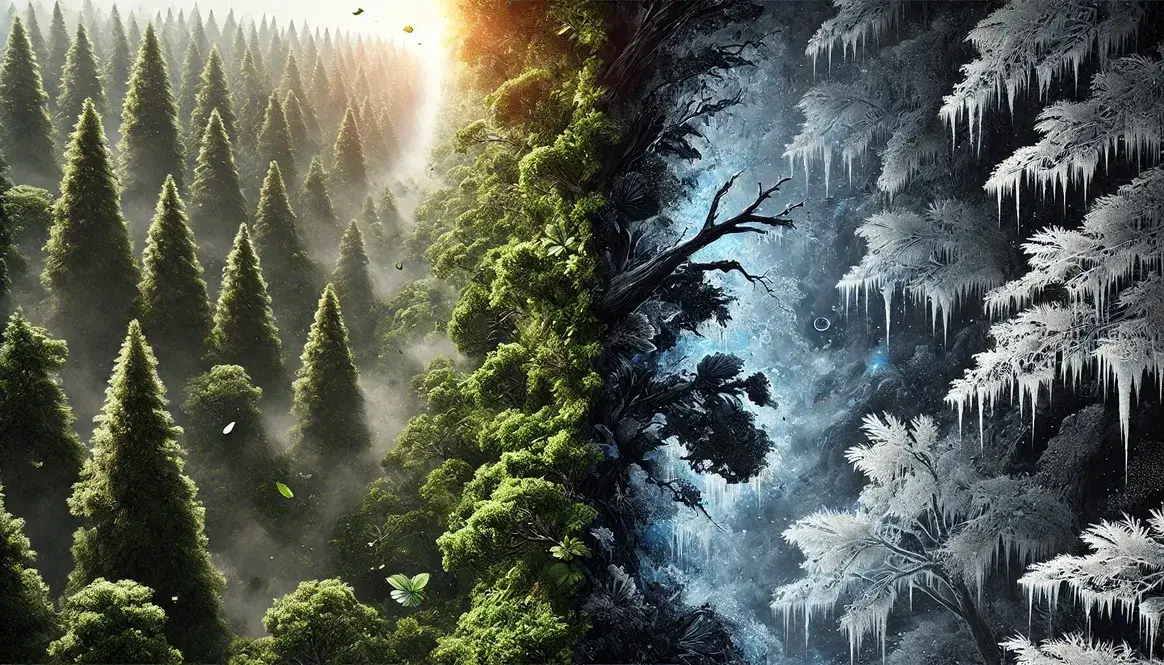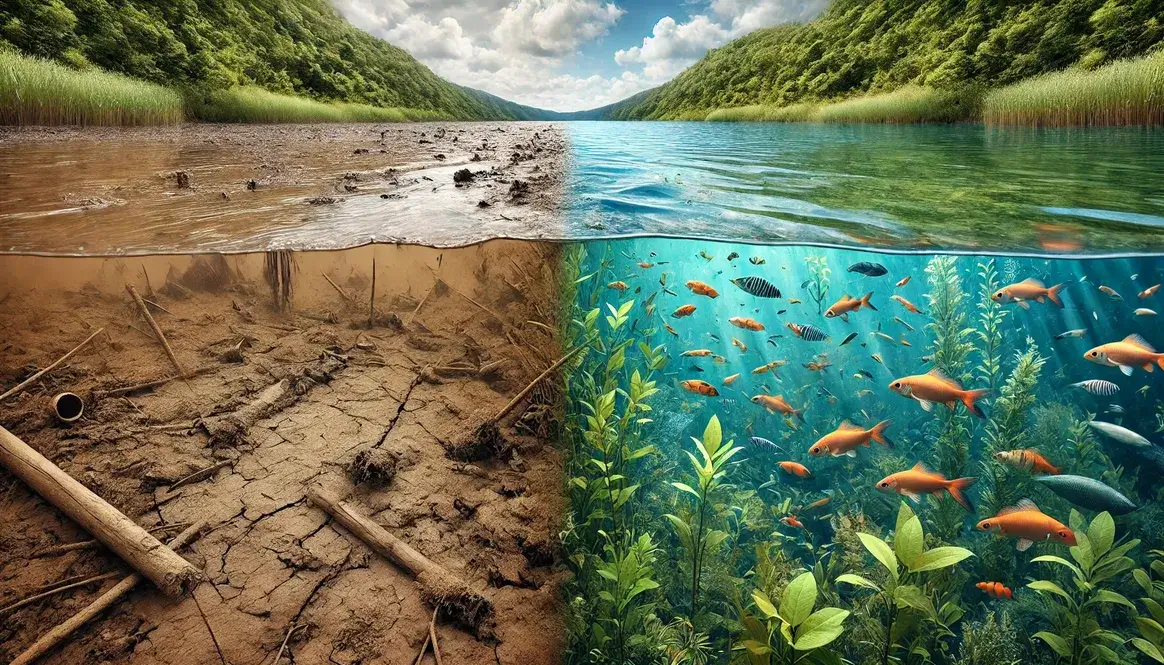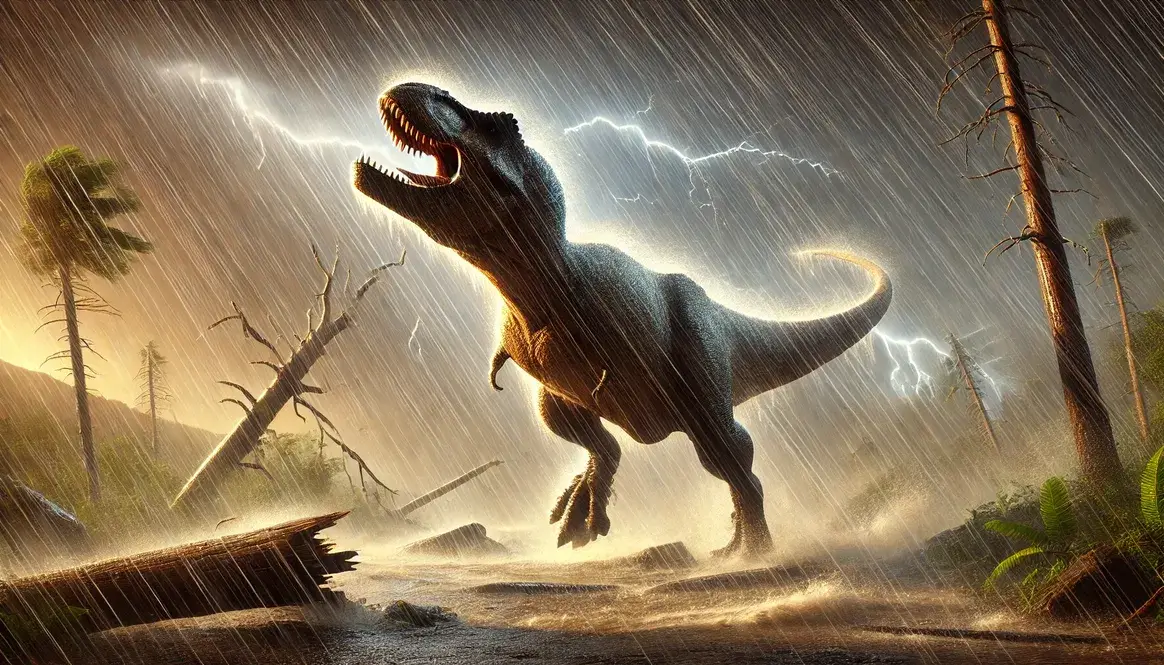Scientists use powerful computers to create detailed simulations of weather during the time of dinosaurs. These computer simulations of Cretaceous weather act like time machines, helping us understand what the Earth was like millions of years ago. By studying these simulations, scientists can better understand how dinosaurs lived and why certain species thrived in different areas.
| Key Computer Simulation Methods | What They Reveal About Cretaceous Weather |
|---|---|
| Global Climate Models | Worldwide temperature patterns and major weather systems |
| Regional Weather Models | Local climate conditions in specific areas |
| Ocean-Atmosphere Models | How ancient oceans and air masses interacted |
| Combined Earth System Models | Complete picture of Cretaceous weather patterns |
What Weather Simulations Tell Us About the Past
Weather simulations are like virtual experiments that scientists run on computers. Instead of building a time machine, researchers use mathematical equations to recreate ancient weather patterns. These simulations help answer questions about what the climate was like at the end of the Cretaceous and how it affected dinosaur life.
These virtual recreations work by:
- Processing information from fossils and rocks
- Using mathematics to calculate ancient weather patterns
- Testing different scenarios to see what matches the evidence
Scientists use these simulations to understand how dinosaurs experienced their world. The models show which areas had rain, where deserts formed, and what temperatures different regions experienced. This information helps explain why certain dinosaurs lived in the Arctic while others stayed near the equator.
Computer Simulations of Cretaceous Weather
Climate models are specialized computer programs that calculate how different parts of Earth’s weather system worked together. These models break down the ancient world into small pieces, like a giant puzzle, and figure out how each piece affected the others.
The basic elements these models examine include:
- Air temperature and movement
- Ocean currents and temperatures
- Rainfall patterns
- Cloud formation
- Land surface conditions
Scientists input various types of data to make these simulations work:
| Data Type | What It Tells Us |
|---|---|
| Rock Samples | Chemical signs of ancient temperatures and rainfall |
| Plant Fossils | Information about local climates |
| Sea Floor Records | Details about ocean conditions |
| Ice Core Data | Evidence of atmospheric composition |
| Mineral Deposits | Signs of ancient weather patterns |
To create accurate simulations, researchers combine this information with their understanding of how oceans moved in the Cretaceous and what the atmosphere contained. They also account for the different arrangement of continents during that time period.
Building a Cretaceous Weather Model
Creating computer simulations of Cretaceous weather requires scientists to consider many different parts of Earth’s climate system. Each element plays an important role in determining how weather patterns formed and changed during the time of dinosaurs.
Physical Elements
The foundation of any Cretaceous weather model starts with three main components:
1. Atmosphere Composition Scientists study carbon dioxide levels in prehistoric times to understand the atmosphere. The mix of gases in the air affected:
- Global temperatures
- Rainfall patterns
- Heat distribution across the planet
2. Ocean Patterns Sea levels in the Cretaceous period were very different from today. The oceans:
- Covered different areas of land
- Moved heat around the planet
- Created unique weather systems
3. Land Arrangements The continents were in different positions, which affected:
- Where rain fell
- How winds moved
- Temperature differences between regions
Key Data Sources
Scientists gather evidence from many sources to build accurate computer models. Here’s what different types of evidence tell us:
| Data Source | Information Provided | Used For |
|---|---|---|
| Rock Samples | Temperature records, rainfall amounts | Understanding local conditions |
| Plant Fossils | Climate zones, seasonal changes | Mapping weather patterns |
| Ocean Floor Records | Water temperatures, currents | Modeling ocean effects |
| Chemical Signatures | Atmospheric composition, temperature changes | Creating global climate models |
The way plants adapted to ancient climates provides valuable clues about local weather conditions. For example, certain types of leaf shapes tell scientists about rainfall amounts, while growth rings in fossil wood reveal seasonal changes.
Understanding Earth’s orbital effects on climate also helps scientists create more accurate simulations. These long-term cycles affected how much sunlight reached different parts of the planet, changing temperatures and weather patterns over thousands of years.
Different Types of Weather Models
Scientists use several types of computer models to study ancient weather. Each type helps them understand different aspects of Cretaceous climate, from worldwide patterns to local conditions.
Global Climate Models
Global climate models are the largest and most complex simulations. They work like a giant virtual Earth, divided into thousands of small boxes. Each box contains calculations about:
| Model Component | What It Calculates |
|---|---|
| Air Movement | Wind patterns and storms |
| Temperature | Hot and cold regions |
| Moisture | Rain and snow patterns |
| Sunlight | Day and night effects |
These models show how prehistoric storms affected weather, creating patterns that influenced where different dinosaur species lived.
Regional Models
Regional models zoom in on specific areas to show more detail about local weather conditions. These smaller-scale simulations help explain why dinosaurs migrated between regions as seasons changed.
Scientists use regional models to study:
- Daily temperature changes
- Local rainfall amounts
- Seasonal weather patterns
- Wind conditions in specific areas
By understanding these local conditions, researchers can better explain why certain dinosaur species preferred particular habitats.
Ocean-Atmosphere Models
Ocean-atmosphere models focus on how water and air interacted during the Cretaceous period. These specialized simulations show that the Cretaceous was very hot partly because of how oceans moved heat around the planet.
These models reveal: Heat Transport
- How warm water moved from equator to poles
- Where major ocean currents flowed
- Effects of deep ocean circulation
Weather Patterns
- Formation of rain and snow
- Development of storm systems
- Changes in wind direction
The relationship between oceans and atmosphere was crucial in determining how quickly climate changed near extinction. These models help scientists understand the speed and scale of these ancient climate changes.
What Scientists Have Learned
Computer simulations have revealed many secrets about Cretaceous weather. These findings help explain patterns that shaped dinosaur life and their environments.
Temperature Patterns
The models show that ancient temperatures varied greatly across the planet:
Global Averages:
- Sea surface: 30-35°C (86-95°F)
- Land areas: 20-40°C (68-104°F)
- Polar regions: 5-10°C (41-50°F)
Regional differences created unique habitats. For example, rivers and lakes changed significantly based on local temperatures, affecting where dinosaurs could find water.
| Region Type | Average Temperature | Notable Features |
|---|---|---|
| Coastal Areas | Warm, stable | Small temperature changes |
| Inland Areas | Hot, variable | Big daily temperature swings |
| Mountain Regions | Cool, seasonal | Strong temperature cycles |
| Desert Areas | Extreme heat | Large day-night differences |
Rainfall and Storms
Computer models reveal that Cretaceous rainfall patterns were different from today. Many regions experienced:
- Intense monsoon seasons
- Long dry periods
- Frequent tropical storms
- Heavy rainfall near the equator
The simulations show that storms were particularly strong in coastal areas. These weather patterns affected which plants could grow, determining food sources for plant-eating dinosaurs.
Wind Systems
Wind patterns played a major role in Cretaceous weather. The models show several key features:
Major Wind Belts
- Strong trade winds near the equator
- Powerful westerly winds in middle latitudes
- Variable polar wind patterns
These winds affected everything from temperature distribution to rainfall patterns. They created distinct climate zones that influenced where different dinosaur species could live and thrive.
Model results indicate that wind systems helped create large desert regions in some areas while bringing regular rainfall to others. This variation in weather conditions explains why dinosaur fossils show different species living in distinct geographical regions.
Challenges in Modeling Ancient Weather
Creating accurate computer simulations of Cretaceous weather presents several significant challenges. Scientists must work around these limitations to make their models as accurate as possible.
Missing Information
Just as paleontologists sometimes find incomplete dinosaur skeletons, weather modelers face gaps in their data. These gaps include:
Common Missing Data Points:
- Exact atmospheric composition
- Complete temperature records
- Precise rainfall amounts
- Detailed ocean temperatures
The limited evidence makes it harder to understand certain aspects of ancient weather. For example, scientists studying how ancient ocean movements affected climate must make educated guesses about some conditions.
Computer Limitations
| Technical Challenge | Impact on Models | Solution Used |
|---|---|---|
| Processing Power | Slower calculations | Simplified equations |
| Memory Limits | Less detail possible | Larger grid squares |
| Time Constraints | Fewer scenarios tested | Focus on key time periods |
Even the most powerful computers today can’t process every tiny detail of ancient weather. Scientists must balance accuracy with available computing resources. This means making some parts of the model less detailed to focus on the most important features.
Verification Problems
One of the biggest challenges is checking if the simulations are correct. Unlike modern weather forecasts, scientists can’t compare their predictions to actual weather measurements from millions of years ago.
To verify their models, researchers:
- Study fossil evidence
- Compare results with geological data
- Look for consistency with known physics
- Test models against similar modern conditions
When examining fossils of plants that lived near water, scientists can check if their models predict the right amount of rainfall for those plants to grow. This helps them judge if their simulations make sense compared to real evidence from the past.
The combination of these challenges means that while computer simulations provide valuable insights into Cretaceous weather, scientists must always remember that their models are best estimates rather than perfect recreations of ancient conditions.
Using Models to Understand Dinosaur Lives
Computer simulations of ancient weather patterns give scientists remarkable insights into how dinosaurs lived. By combining weather data with fossil evidence, researchers can paint a detailed picture of dinosaur habitats and behaviors.
Weather simulations reveal that different dinosaur species adapted to specific climate conditions. For instance, some dinosaurs developed special features to handle extreme temperatures, much like modern animals adapt to their environments.
| Climate Type | Habitat Features | Dinosaur Adaptations |
|---|---|---|
| Hot Deserts | Limited water, high heat | Early morning activity, heat regulation |
| Humid Forests | Regular rain, steady temperatures | Year-round activity patterns |
| Seasonal Areas | Changing conditions | Migration behaviors |
| Coastal Regions | Moderate temperatures | Mixed feeding strategies |
The models show that ancient weather patterns influenced where dinosaurs could find food and water. This information helps explain why certain species lived where they did. For example, simulations of rainfall patterns match up with fossil locations of plant-eating dinosaurs that needed lots of vegetation.
Key Weather Effects on Dinosaur Life:
- Food availability in different seasons
- Water source locations
- Safe nesting sites
- Migration routes
These weather simulations also help explain dinosaur extinction. The models show how dramatic changes in global weather patterns affected different regions. When combined with evidence from dinosaur extinction fossils, scientists can better understand why some species survived longer than others in certain areas.
The relationship between weather and dinosaur behavior becomes clear when researchers study migration evidence. Just as African animals migrate today, many dinosaurs moved with the changing seasons to find better conditions. Computer models of ancient weather help scientists understand these migration patterns by showing where and when favorable conditions existed.
By studying these weather patterns, scientists continue to discover new connections between climate and dinosaur life, helping us better understand these remarkable animals and their world.









